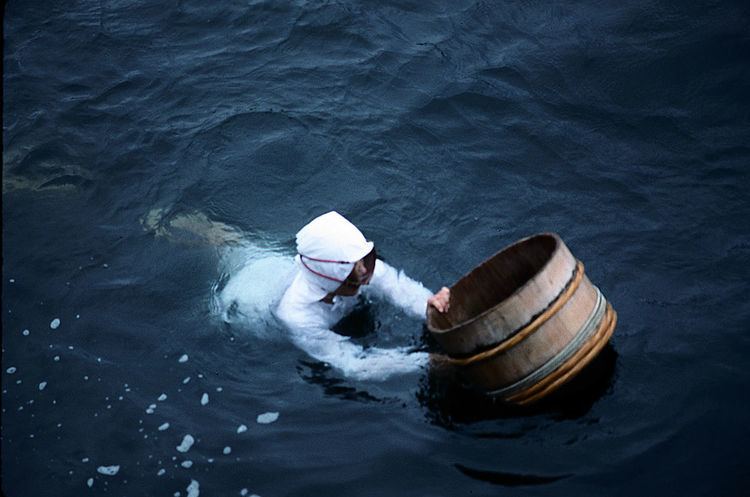 | ||
Ama (海人, women 海女; men 海士;), uminchu (in Okinawan) or kaito (in the Izu Peninsula) are Japanese divers, famous for collecting pearls. The majority of ama are women.
Contents
Ama means "sea woman".
History
Japanese tradition holds that the practice of ama may be 2,000 years old. Traditionally, and even as recently as the 1960s, ama dived wearing only a loincloth. Even in modern times, ama dive without scuba gear or air tanks, making them a traditional sort of free-diver.
Activities
Depending on the region, ama may dive with masks, fins, and torso-covering wetsuits at the most. Only divers who work for tourist attractions use white, partially transparent suits.
Ama are famous for pearl diving, but originally they dived for food like seaweed, shellfish, lobsters, octopus, and sea urchins — and oysters which sometimes have pearls.
Ama can keep diving well into old age. The older divers are generally able to stay submerged longer than the younger. Usually they also have another job, typically working on a farm. Some Japanese people believe that the majority of ama are women because of how their bodies differ from men: The fat on a female body is distributed differently from on men.
